Outlook Rrs Feed Too Many Items
If you've used Microsoft Outlook for an extended period of time, you may have noticed that it doesn't run quite as smoothly as it used to. Outlook's performance is affected by many things, including the amount of data it has to keep track of, any add-ons that are installed, how often it checks for new mail (checking more frequently can improve performance), and various other factors. Whether you use POP, IMAP, ActiveSync or MDaemon Connector for Outlook, you can perform various tasks to improve Outlook's performance. Follow the steps outlined below to keep Outlook running like a well-oiled machine. Unlike POP, which stores data in a PST file, MDaemon Connector for Microsoft Outlook stores a local copy of your email account data in a local cache file. If you are using MDaemon Connector, you can compact this cache file to improve performance. Here's how: NOTE: MDaemon Connector includes the option "Download Headers Only" under the Send/Receive tab of the MDaemon Connector Client configuration screen. When this option is enabled, Outlook only downloads the information needed to show email messages in your Inbox, and not the full content of each message. When you click on an email, the rest of the message is downloaded for viewing. Users may experience a slight delay in viewing messages in the preview pane when "Download Headers Only" is enabled because Outlook has to download the rest of the message when it is selected. If messages are show to appear in the preview pane or when viewing, try disabling "Download headers only." For more information on how to improve Outlook performance when using MDaemon Connector, you can review our Improving Outlook Performance how-to guide. Performing the following housekeeping tasks regularly will help minimize the amount of data that Outlook must process, and will reduce the amount of memory used by the program. We recommend performing these housekeeping tasks regularly: Having too many Outlook add-ins can bog down Outlook's performance. When Outlook is installed for the first time, it comes with its own set of add-ins. Not all of these add-ins will be activated, and there may be add-ins enabled that you don't need. Here is a list of default Outlook add-ins: This page contains a List of all default Outlook Add-ins, plus other add-ins you might encounter. In addition, other third-party applications can add their own Outlook add-ins. Fortunately, it's easy to disable unwanted add-ins. In Outlook 2010 and up: Go to File | Options | Add-ins. Locate the Manage drop-down menu at the bottom, and select Com Add-ins, then click on Go. To disable specific add-ins, simply uncheck the items you don't need, and click on OK. You can also use the Remove button to remove selected items completely. For some add-ins, you may need to restart Outlook for your changes to take effect. Disable Outlook Add-Ins If you have a lot of RSS feeds that are synchronized with Outlook, these syncing tasks could bring Outlook to a crawl. If you aren't using Outlook as an RSS reader, you can disable this feature by following these steps: Go to File | Options. Click on the Advanced button in the left-hand navigation menu. Under the RSS Feeds section, uncheck both options. Disabling RSS in Outlook Adjusting Outlook's Send/Receive schedule can often improve performance. If email messages are slow showing up in your Inbox, you can configure Outlook to send/receive messages more frequently so that it doesn't have to download as much data each time it checks for new messages. If your send/receive schedule is set to check less-frequently, say, every 30 minutes, try changing it to send/receive every 3 minutes. Microsoft Outlook users can find this setting via File | Options | Advanced. Locate the Send/Receive section and click on the Send/Receive button. Then, under Send/Receive Groups | All Accounts, adjust the timing for "Schedule an automatic send/receive every..." as shown here: Outlook Send Receive Schedule PST files can be another source of Outlook sluggishness. You can help improve Outlook's performance by: To compact a PST file in Outlook 2010, 2013 and 2016: Sometimes, your PST files can develop errors or data inconsistencies, resulting in unexpected behavior in Outlook. When you suspect that there's an issue with the integrity of your PST file, you can run Scanpst.exe to repair your PST files. Scanpst can be tricky to locate. By default, you should be able to find it in the Program Files | Microsoft Office | Office16 folder, but you may need to perform a search if you can't find it in its default location. This location may vary depending on which version of Outlook you are using. You may also want to create a shortcut to this file on your desktop for easier access. Before using this tool, we recommend making a backup copy of your PST file in case any errors or file corruptions occur to the original file. This shouldn't be an issue, however, because if Scanpst finds any errors, it will prompt you to make a backup before attempting to repair the file. Microsoft periodically releases Windows updates and service packs. Having the latest updates and service packs can help improve your computer's overall performance as well as Outlook's performance. Nobody should have to put up with sluggish Outlook performance. Following the above suggestions will help ensure that you spend less time waiting for things to happen, and more time making things happen! For more information, check out our how-to guide on improving Microsoft Outlook Performance, located on our Literature page. Click here to download the PDF.
MDaemon Connector Users
Compact the MDaemon Connector Local Cache File
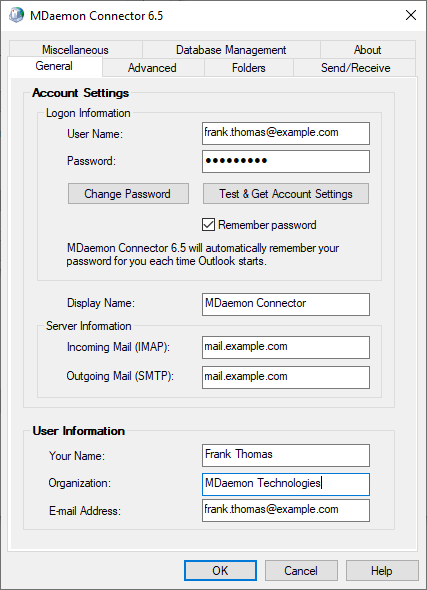 MDaemon Connector for Outlook Options
MDaemon Connector for Outlook Options POP, IMAP, ActiveSync or MDaemon Connector Users
Perform Regular Housekeeping
Disable Outlook Add-Ins
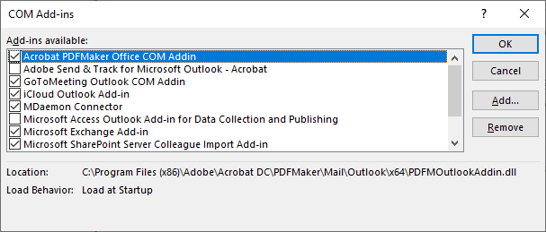
Disable RSS Feeds
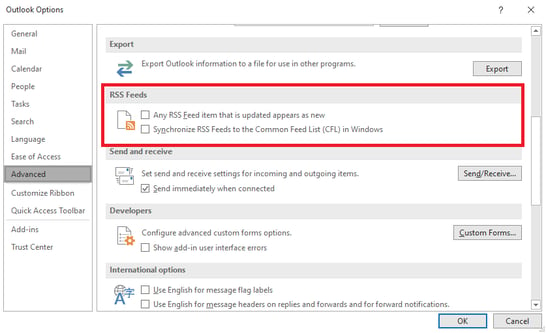
Adjusting the Send/Receive Frequency
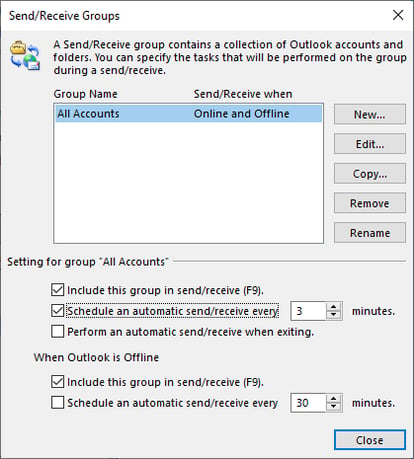
POP, IMAP & ActiveSync Users
Compact or Repair PST Files
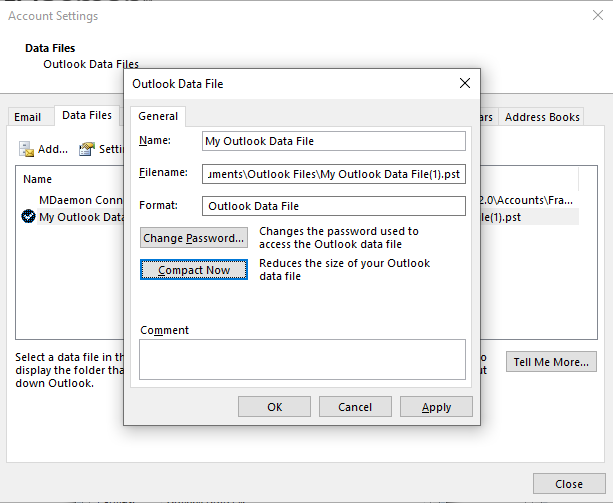 Compacting a PST in Outlook
Compacting a PST in Outlook Keep Windows Up-to-Date
Conclusion
Tags: Email Gateway How-To, Email How To, Email Security Best Practices, Two-Factor Authentication, Email Security Trends, Email Best Practices

Written by Brad Wyro
Brad has worked in technical and marketing roles at MDaemon Technologies, where he contributes as Content Marketing Manager. Brad balances technical and creative information to develop easy to understand videos and content to educate prospects and customers.
melendezasher1949.blogspot.com
Source: https://blog.mdaemon.com/how-to-improve-outlook-performance
0 Response to "Outlook Rrs Feed Too Many Items"
Post a Comment